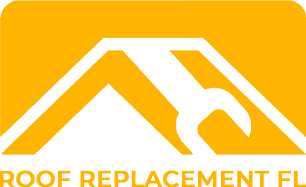Roof Replacement Financing

Introduction
Roof replacement is a significant financial investment for homeowners. Given the high costs associated with roof replacement, many homeowners seek financing options to manage the expense. This article explores various financing methods, their benefits, drawbacks, and considerations for homeowners.
Types of Roof Replacement Financing
1. Homeowners Insurance
Homeowners insurance can cover roof replacement if the damage is due to a covered peril such as fire, wind, hail, or the weight of ice or snow. However, it typically does not cover damage due to wear and tear or lack of maintenance. The amount covered depends on the policy terms, coverage limits, and deductibles. Policies may offer either Replacement Cost Value (RCV) or Actual Cash Value (ACV) coverage, with RCV covering the full cost of replacement and ACV covering the depreciated value of the roof.
2. Mortgage Refinancing
Mortgage refinancing involves replacing an existing mortgage with a new one, potentially at a lower interest rate. A cash-out refinance allows homeowners to borrow more than the outstanding mortgage balance and use the extra funds for roof replacement. This option requires sufficient home equity and may extend the mortgage term, but it can offer lower interest rates compared to other loans.
3. Home Equity Loans and HELOCs
- Home Equity Loan: This is a lump sum loan using home equity as collateral. It typically offers lower interest rates than unsecured loans but requires sufficient home equity and carries the risk of foreclosure if not repaid.
- HELOC: A Home Equity Line of Credit (HELOC) functions as a revolving credit line based on home equity. It offers flexibility in borrowing and repayment, often with lower interest rates during the draw period. However, it also requires sufficient home equity and carries the risk of foreclosure.
4. Personal Loans
Personal loans are unsecured loans available from banks, credit unions, and online lenders. They do not require collateral and can be used for various purposes, including roof replacement. Personal loans typically have higher interest rates than secured loans but offer quick funding and flexible terms.
5. Credit Cards
Using credit cards for roof replacement can be convenient, especially if the card offers a 0% interest promotional period. However, credit cards generally have high APRs after the promotional period ends, making them a costly option if the balance is not paid off quickly.
6. Roofing Company Financing
Some roofing companies offer financing plans directly or through third-party lenders. These plans can be convenient and may offer low or 0% interest rates. However, terms and interest rates vary, and the overall cost may be higher due to fees and interest.
7. Government Loans and Grants
Government loans and grants, such as FHA Title 1 loans and FHA 203(k) loans, can help finance roof replacement. These loans often have lower interest rates and more lenient credit requirements but may involve a lengthy application process and specific eligibility criteria.
8. Cash-Out Refinancing
Cash-out refinancing involves refinancing a mortgage for more than the outstanding balance and taking the difference in cash. This option can provide funds for roof replacement at potentially lower interest rates, but it involves higher closing costs and the risk of foreclosure if not repaid.
Benefits of Roof Replacement Financing
- Increased Affordability: Spreads the cost over time, making it more manageable.
- Flexibility in Payment Plans: Options for short-term or long-term plans.
- Immediate Repairs: Allows for prompt addressing of roofing issues, preventing further damage.
- Access to Quality Materials and Services: Enables investment in durable materials and professional installation.
- Increased Property Value: Enhances home value and aesthetic appeal.
Drawbacks of Roof Replacement Financing
- Debt Accumulation: Increases overall debt burden.
- Interest Costs: Higher total cost due to interest payments.
- Credit Impact: Potential negative impact on credit score if payments are missed.
- Approval Process: Time-consuming and may require extensive documentation.
Considerations for Homeowners
- Get Multiple Quotes: Obtain estimates from several roofers to understand the total cost.
- Check Credit Score: Ensure a good credit score to qualify for better financing terms.
- Consult Financial Advisors: Seek professional advice to choose the best financing option.
- Understand Loan Terms: Carefully read and compare loan terms, interest rates, and repayment conditions.
Conclusion
Financing a roof replacement can be a practical solution for managing the high costs associated with this essential home improvement. By understanding the various financing options and their implications, homeowners can make informed decisions that align with their financial situation and long-term goals.
